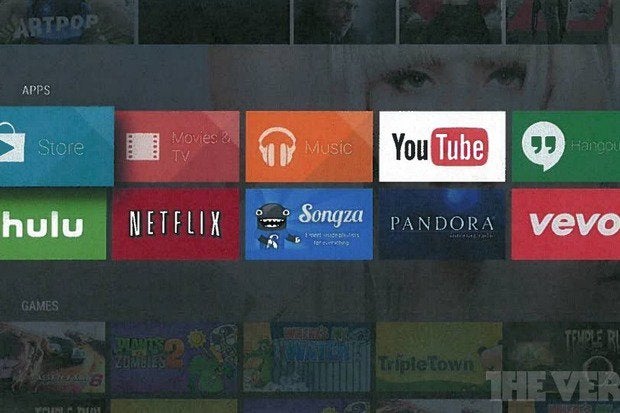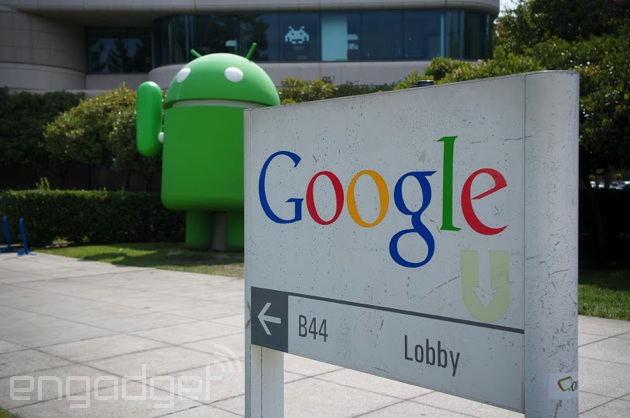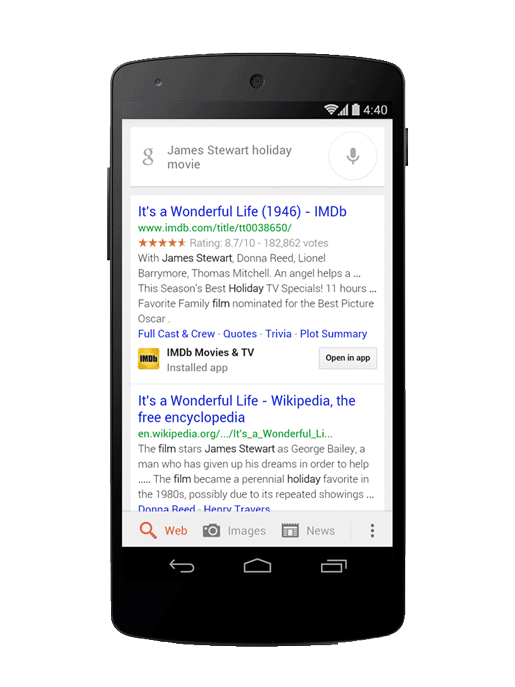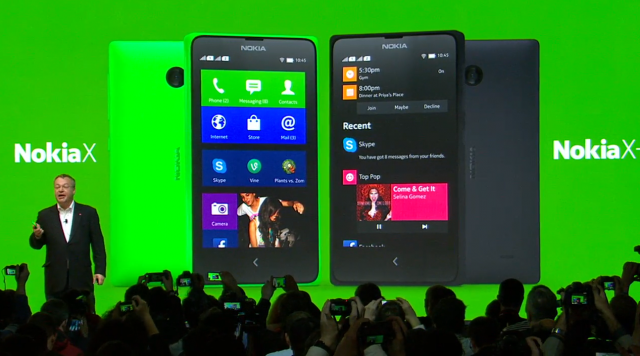
Stop me if you’ve heard this one: It’s a little box you plug into your TV, and runs onmobile technology. It has a simple big-screen TV interface that’s meant to be operated with a simplified remote with just a few navigation buttons. It has Netflix, Hulu Plus, Crackle, Vevo and Pandora, and of course you can rent or buy video and music through its own marketplace. It even plays some mobile games, re-jiggered for your TV.
This weekend, The Verge published details of Android TV, based on information in leaked internal documents. And if what that article divulged is what Android TV is all about, I’m totally disappointed. One of the largest and richest software companies in the world managed to build another Apple TV. Or Roku. Or Fire TV. Take your pick.
Look, guys, it’s another streaming media box!
According to the leak, the new Android TV would feature exactly the same stuff the other guys offer. Sure, the search bar is there (it is Google after all), but for the most part it looks like you scroll through categorized lists of movies, music, and TV shows available from the major services, including of course, Google Play. It’s a drastic improvement over the “search the Internet and your local guide for stuff” experience of Google TV, but that’s a pretty low bar to clear.
Android TV will allegedly serve up custom recommendations, and that’s hardly an earth-shaking innovation. Netflix, for one, takes great pride it its recommendation system. No doubt, Google will employ the same technology it uses to recommend shows to watch in its Google Now cards. But I hope it makes serious improvements to the algorithm, because I keep getting recommendations for movies that I’ve already watched. And Jeopardy! Always Jeopardy!
Google’s descriptions of its product read like a carbon-copy of the talking points for literally every streaming media product ever. It will have an interface that is “cinematic, fun, fluid, and fast”? Get outta town!
“Access to content should be simple and magical,” Google says? I think we may need to reset our expectations for what qualifies as “magical.” The Verge article doesn’t mention it, but I would be gobsmacked if Android TV doesn’t also allow you to push all Chromecast-enabled content from your phone or browser to it.
These are table stakes, folks. This is the bare minimum a streaming media box needs in 2014. Google isn’t supposed to be a “bare minimum” company, is it?
Solving exactly zero streaming TV problems
It doesn’t sound like Google is interested in solving any oflike Google is interested in solving any of the real drawbacks of streaming media boxes. There isn’t the faintest mention of live TV, or local news and weather, or local sports. I’m sure it will have apps like MLB.tv, which let you watch every team but your home team. These problems aren’t technological, as rights holders refuse to make their content available at a price that would allow a streaming box to challenge cable. And because the content rights guys are also the cable guys (see: Comcast/NBCUniversal, Time Warner), that’s not likely to change.
But there are no other “wow” features. Maybe Google could make a play for video quality, promising broad support for HEVC to deliver better visuals with less bandwidth. Perhaps it could promise the largest selection of 4K content, making it the go-to streaming box for the coming wave of 4K TVs. The company pushing gigabit fiber-to-the-home Internet access should probably be the one driving toward substantially improved video and audio quality, right?
How about dealing with the rip-off that is streaming rentals and purchases? Renting a streaming flick for $4 or $5 is the same price we used to pay the video store, where there was physical inventory and discs and loss prevention to deal with. And $15 to $20 to “own” a movie? For the same price as a Blu-ray, you get to stream the exact same low-bitrate data they send you for the $5 rental. Android TV, according to the leak, doesn’t seem to take aim at solving the “streaming rentals and purchases are priced poorly” problem.
Does it integrate with your cable or satellite box, puling together all your live and DVR content with streaming stuff? If it does, there’s no mention of it.
Good enough isn’t good enough
To be fair, Android TV as described in The Verge piece is competitive. It’s fine. But I can’t help but be disappointed that it is only competitive. It’s just fine.
Everyone with a video content ecosystem, from Microsoft and Apple to Amazon and Google, is desperate to make sure their potential customers don’t get locked into their competitor’s stores. Google needs to push Android TV to market because they don’t want you to build a library of stuff from iTunes or Amazon Instant Video. But what is good for Google is not necessarily good for us.
Frankly, I expected more from a company with the resources of Google. In addition to the aping the offerings of the other major streaming TV boxes, I expected at least one big idea, one “aha!” feature or function that would make Android TV clearly more desirable than its counterparts. Instead, it appears to be a box that will compete on the merits of its refined interface and recommendation engine, neither of which have been Google’s strong suits in the past.
Of course, nobody has used Android TV yet, or even seen it in action. This is all based off an initial report from leaked internal documents and images. But if Android TV will indeed promise impressive features you won't find in other streaming boxes, wouldn't those documents have mentioned it? I want to be excited about Google taking yet another stab at the living room (what is this, the fourth, if you count Nexus Q?). But I just don't see a lot to be thrilled about.





























